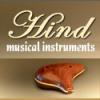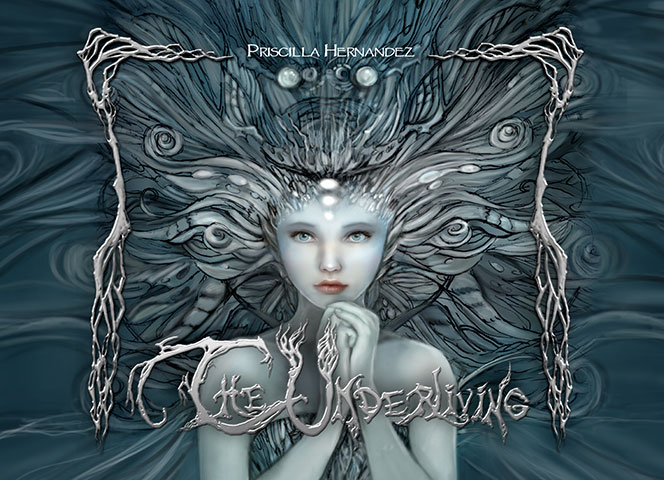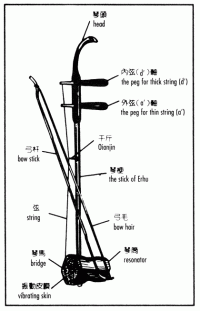Erhu: The weeping and moving chinese violin
There are only a few instruments that in my opinion can be playd with such great beauty and sadness. The chinese violin or erhu have that distinct weeping sound, with those typically sliding notes that points it as one of the most reknown sounds of Asian music not only en ensembles and orchestras but also as a solo instrument with an everchanging haunting and sometimes very similar to human voice sound able to convey a great variety of moods (from melancholic to merry) being even more expressive and soulful than the occidental violin, from lavish low tones to clear high notes.

The Erhu is an ancient Asian instrument, brought to China during the Han dynasty (~140 B.C.) and member of the huqin family. Bowed instruments became popular in China during the Sung dynasty (A.D. 960-1279). The Erhu is one of the most widely used bowed instruments in China.
The Erhu is a bowed stringed instrument with two strings and the body consists of a long vertical stick-like hardwood neck, at the top of which are two large tuning pegs, and at the bottom is a small resonator body or sound box covered with python snake skin like a drum with 6-8 sides that provides its distinct tone to the instrument. The strings are The bow is traditionally made of horsehair tied to a bamboo stick and the horsehair run between the strings so you cannot take the bow out of the instrument unless one of the strings is broken.This instrument is played with the bow between the strings in a push-pull manner.
Above: parts of the instrument
Honestly I've not found much about instructional material out there, but there is a course for 99$ at Learnerhu that grants you to learn the very basics of the instrument in just three months, as I haven't tried it cannot tell how accurate it is but it worths to have a look to the description at their site.
Below another video of an erhu solo piece "River of Sorrows" performed by Song Fei that shows some close ups so you can perceive the fingering technique as the traditional way of performing the instrument is indeed rich in ornamentation. Normally is played while seated holding the instrument vertically on the lap with the left hand while bowing with the right. There is no fingerboard; the player stops the strings by pressing their fingertips onto the strings without the strings touching the neck.
In Ebay you can find a wealth of erhus and accessories like strings ranging, going as cheap as 100 dollars. I do not recommend to go for the cheapest option, but still if you opt for an economic erhu be sure you pick one with professional size.
You can purchase a virtual instrument (VST) of erhu from Kong audio

Kong Audio is a company specialized in sampling traditional chinese instruments. Recorded the sessions with a distinguished Erhu musician, Mr. YuSheng Liu(who has won in several national/provincial Erhu competitions), to capture the nuance and brilliance of various delicate Erhu playing techniques.
ChineeErhu contains extensive expressions of legato, vibrato, F-p-F, staccatos, pizzicato, tremolos, glide and trills, cleverly woven and programmed to be used with MIDI aftertouch/modwheel, along with the keyswitch feature provided by the plugin, to bring the users the most lively articulations as easily accessible as possible.
Other interesting links:
Read the wikipedia article for more information.
Article about the erhu with some sound samples.
- Login to post comments










